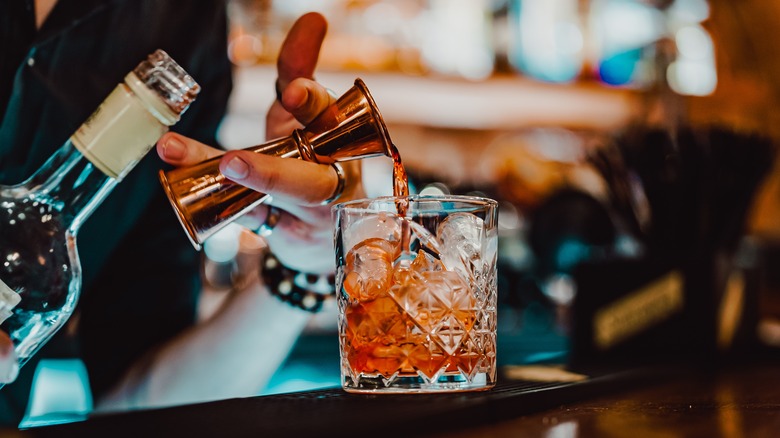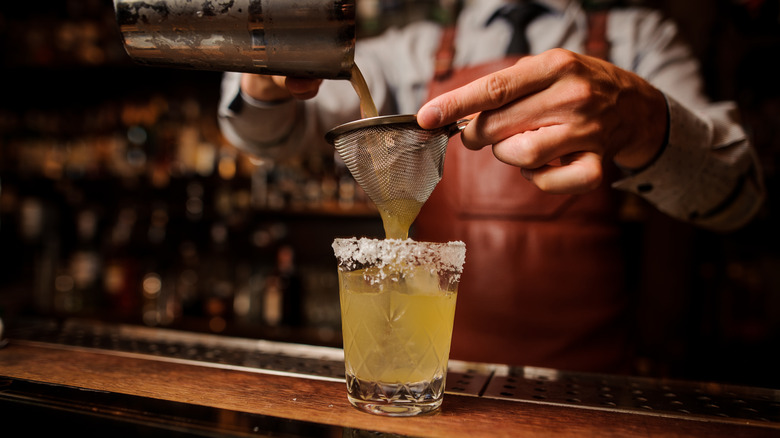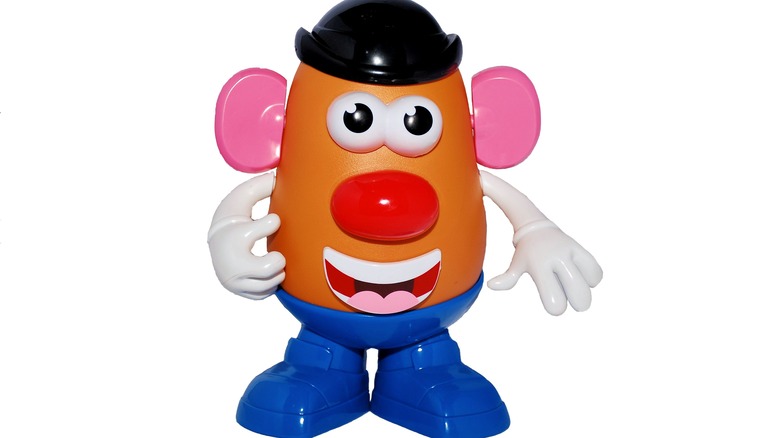What Does The Phrase 'Mr. Potato Head' Mean In Bartending?
Even for enthusiastic drinkers, the world of bartending can seem very intriguing and mysterious. Take common bartender lingo, for instance. According to Wine Enthusiast, a dry shake entails agitating a beverage in a shaker without the addition of ice, while a finger refers to a rough unit of measurement equal to about two ounces, or one finger-width of liquor in the glass. There are also "call drinks," which are the opposite of "well drinks." In this case, a patron would name a specific liquor brand, such as Tito's Vodka, instead of requesting the well version, or what is also known as "house."
When it comes to cocktails, forward-thinking bartenders use a specially named system to go beyond the classic concoctions. Drunkard's Almanac explains that Mr. Potato Head and its swappable body parts can serve as inspiration when experimenting with different ingredients. The official Potato Head website describes the classic Mr. Potato Head toy consisting of one large potato head with feet, mouth, nose, eyes, and ears, as well as assorted accessories. Each of these components can be swapped for another version, much like certain cocktail ingredients can be traded to create new drinks.
Building new cocktails one component at a time
As often happens with the coining of phrases, it's hard to definitively pin down the originator of the Mr. Potato Head concept as it relates to cocktail creation. However, Australian Bartender does have iconic New York bartender Phil Ward on record as being a proponent of the theory. According to Ward, an established cocktail recipe can be used as a 'template' for other drinks when you take one ingredient and replace it with another.
For instance, Liquor.com states that Ward is the creator of the Oaxacan Old Fashioned, which is an updated version of the standard Old Fashioned. Ward's cocktail contains reposado tequila, mezcal, agave syrup, bitters, and a 'flamed' orange peel as a garnish. As for the classic Old Fashioned, Difford's Guide calls for bourbon, rye whiskey, brown sugar syrup, and bitters. When comparing both recipes, it's easy to see where Ward tweaked the ingredients to give his drink that Oaxacan flair. However, less practiced bartenders and drinkers should tread carefully when 'Potato Heading' on their own.
How to 'Potato Head' your very own cocktails
While experimentation is definitely a good thing in the world of bartending, certain rules must be respected to ensure a new concoction is palatable. As explained by The Guardian, each ingredient added can have a major impact on the finished product, whether it's your liquor base, choice of mixer, or style of ice. It's also crucial that the flavors of the drink are perfectly balanced, meaning that one doesn't overpower the others in the mix.
Consider the potato body/head as the base, which translates to the "base" liquor used in a cocktail. Next come the ears, which can be a mixer or add-on, such as bitters. As for the mouth, think about the additional ingredients, like simple syrup, while the nose is comparable to a garnish, such as an olive or orange peel Of course, this is not a concrete map of ingredients, as you can arrange them how you prefer.
To really tap into your mixologist abilities, Popular Mechanics recommends getting to know the different 'cocktail families,' as well as complementary flavor pairings. For example, the Martini family consists of dry vermouth and gin, and an olive or lemon garnish. There's also the whiskey highball family, which includes seltzer, scotch, and a lemon wedge for garnish. When it comes to flavor pairings, combining the right ingredients is essential for striking the perfect balance, which you can attempt to "Potato Head" toward.


